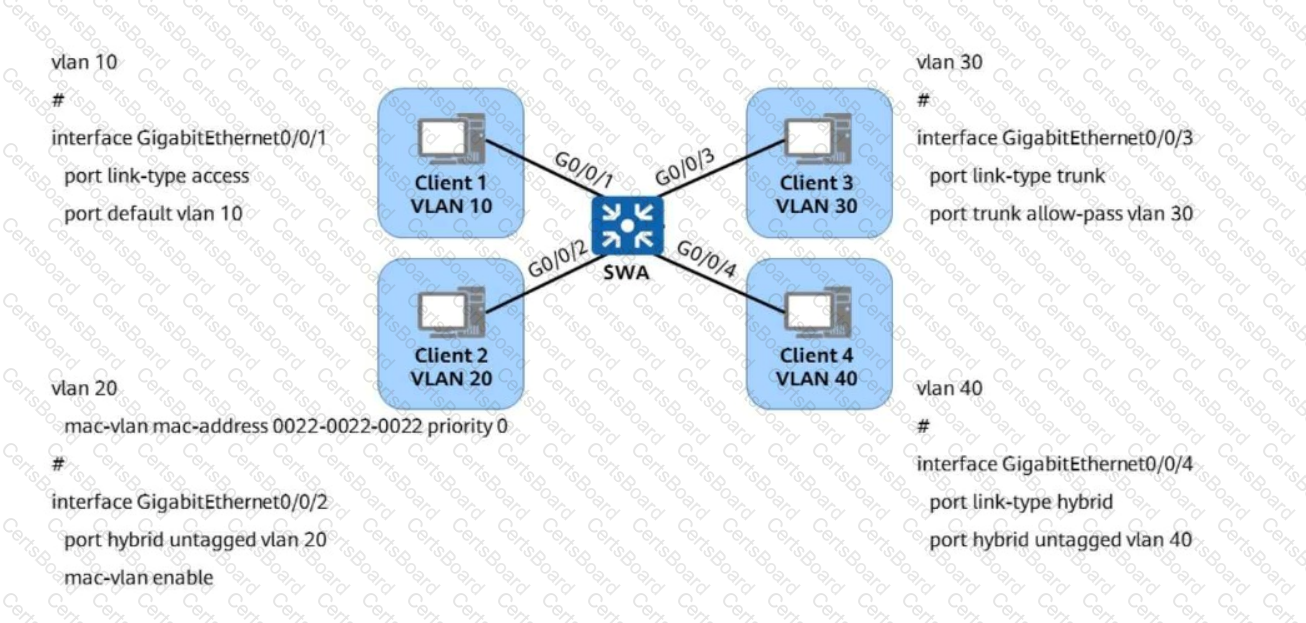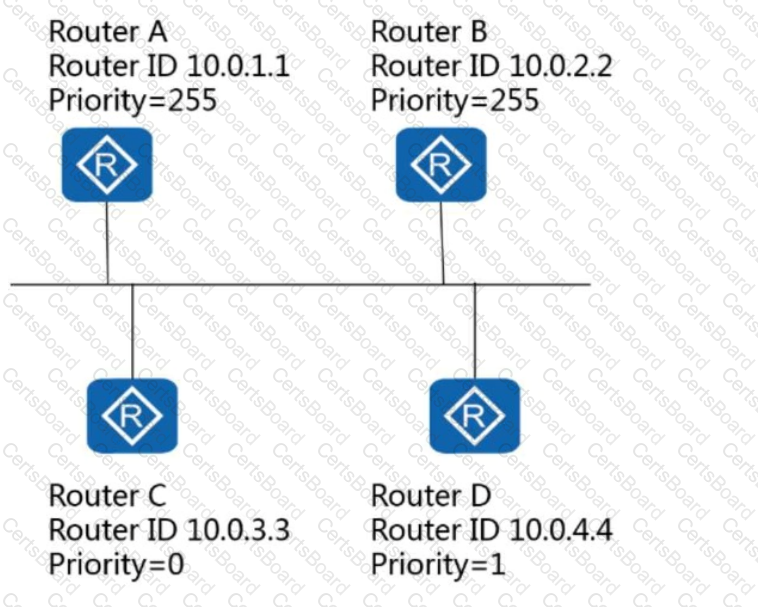To determine which statements are true, we need to analyze the VLAN configurations on the Huawei switch (SWA) as shown in the diagram and configuration details. We’ll evaluate each client’s VLAN membership and verify the correctness of the VLAN assignment commands based on Huawei switch configuration principles, as outlined in HCIA Datacom documentation. Let’s break it down step by step:
Additionally, Huawei supports MAC address-based VLAN assignment (using the mac-vlan command), which assigns VLAN membership based on a device’s MAC address, overriding port-based VLAN settings.
Analyzing the Configuration for Each Client:Let’s examine the configuration details for each interface connected to the clients and verify the VLAN assignments:
text
WrapCopy
vlan 10
#
interface GigabitEthernet0/0/1
port link-type access
port default vlan 10
text
WrapCopy
vlan 20
mac-vlan mac-address 0022-0022-0022 priority 0
#
interface GigabitEthernet0/0/2
port hybrid untagged vlan 20
mac-vlan enable
However, the diagram does not specify the MAC address of Client 2. If Client 2’s MAC address is not 0022-0022-0022, the MAC-VLAN assignment does not apply, and the port’s default VLAN (VLAN 20, untagged) determines its membership.
If Client 2 has MAC address 0022-0022-0022, it would belong to the VLAN specified by the mac-vlan command (VLAN 20, as no specific VLAN is mentioned in the mac-vlan command, implying it uses the port’s default VLAN or another configured VLAN). But since the MAC address is not provided, we assume the port-based VLAN assignment (VLAN 20) applies.
Statement B (“Client 2 belongs to VLAN 20, and the commands for MAC address-based VLAN assignment on the switch are correct”) is potentially true if Client 2’s MAC is 0022-0022-0022, but without confirmation, we must consider the port’s default VLAN 20. However, the MAC-VLAN priority is set to 0, which is unusual (priority 0 typically indicates the lowest priority, and Huawei recommends non-zero values for MAC-VLAN). This suggests a potential configuration error or ambiguity.
Given the lack of MAC address confirmation and the unusual priority 0, Statement B is not definitively true, as the MAC-VLAN assignment may not function as intended or may conflict with port-based VLAN 20.
text
WrapCopy
vlan 30
#
interface GigabitEthernet0/0/3
port link-type trunk
port trunk allow-pass vlan 30
Trunk ports carry tagged traffic for specified VLANs. For Client 3 (an end device, typically not a switch), the trunk port configuration is unusual because end devices usually connect via access ports, not trunk ports. However, if Client 3 is configured to send tagged frames for VLAN 30 (e.g., a VLAN-aware device like a phone or IP camera), it can belong to VLAN 30.
text
WrapCopy
vlan 40
#
interface GigabitEthernet0/0/4
port link-type hybrid
port hybrid untagged vlan 40
B: Not definitively true – Client 2 belongs to VLAN 20 based on the port’s hybrid untagged VLAN 20, but the MAC-VLAN configuration with priority 0 is ambiguous without Client 2’s MAC address, and the priority 0 may indicate a configuration error. Thus, we cannot confirm the MAC address-based VLAN assignment is correct.
Statements A, C, and D are true based on the configuration and VLAN assignment rules. Statement B is not definitively true due to the ambiguity of Client 2’s MAC address and the unusual priority 0 in the MAC-VLAN configuration.
Answer: A, C, D
References from HCIA Datacom Documents:
HCIA Datacom V3.0, Chapter 4: VLAN Technologies – Access, Trunk, and Hybrid Port Configurations
HCIA Datacom V3.0, Chapter 4: MAC Address-Based VLAN Assignment – mac-vlan Command and Priority Settings
Huawei VLAN Configuration Guide (HCIA Datacom Certification Material) – Port Link Types and VLAN Assignment Rules

